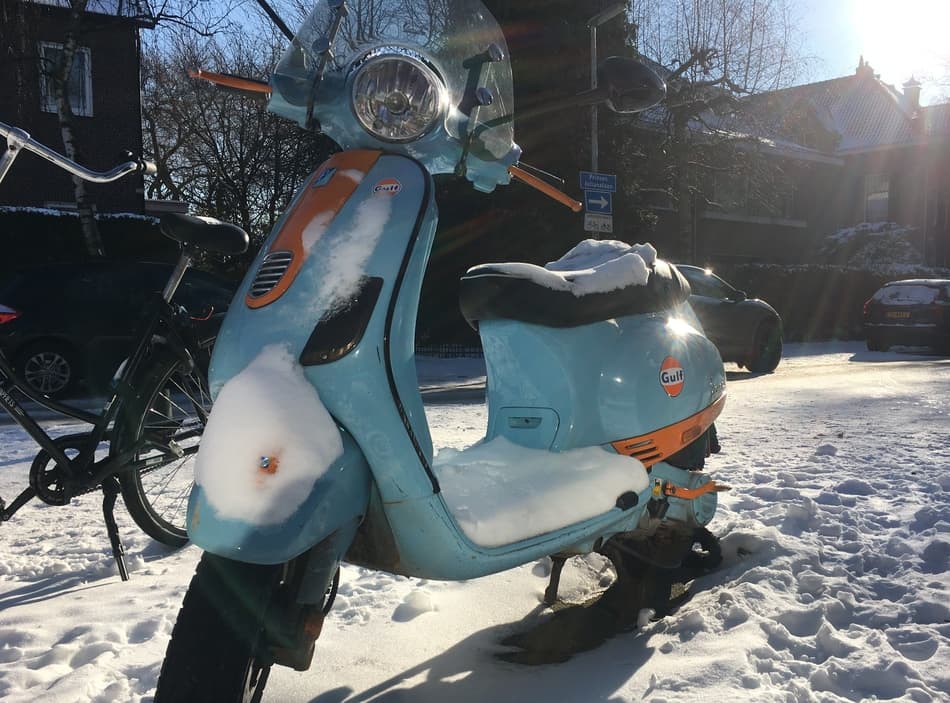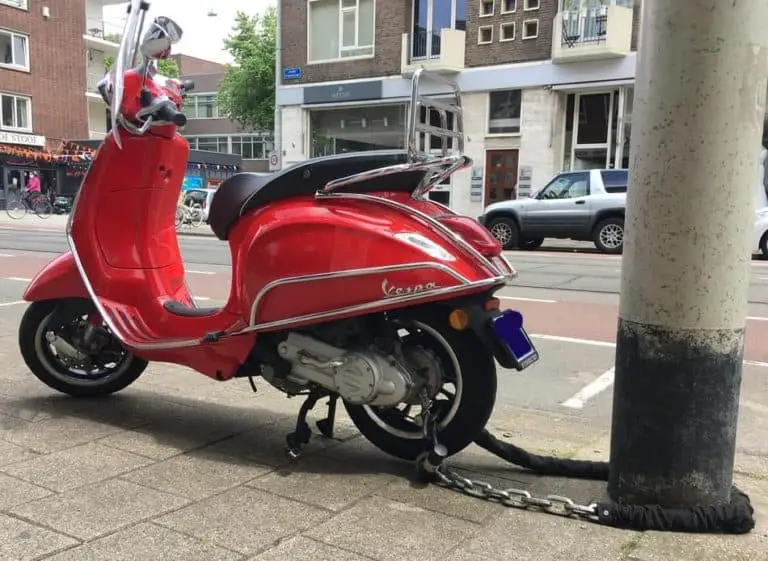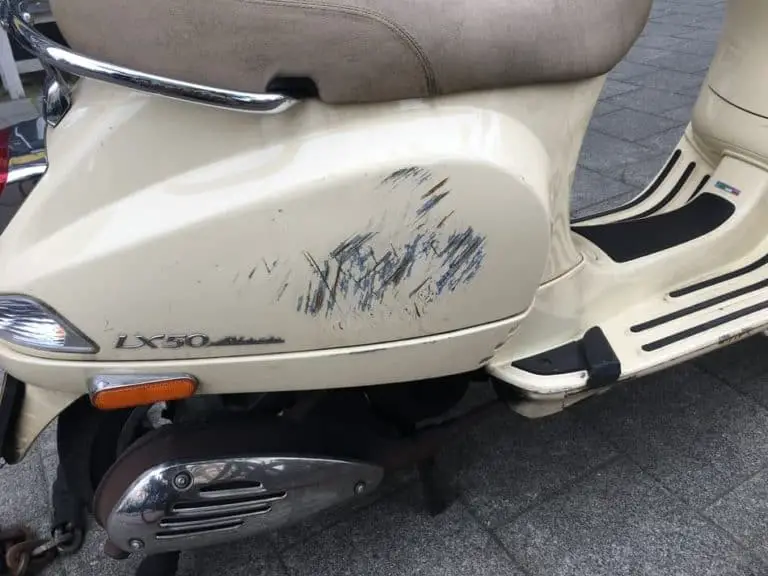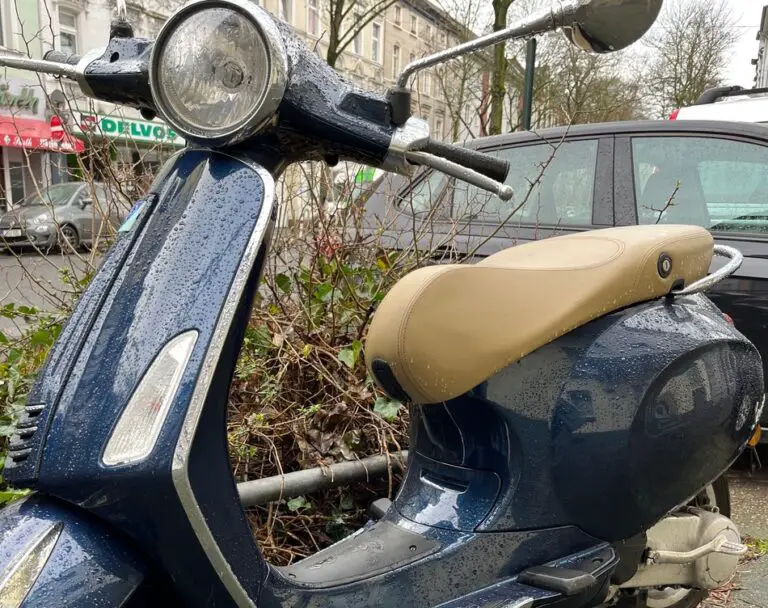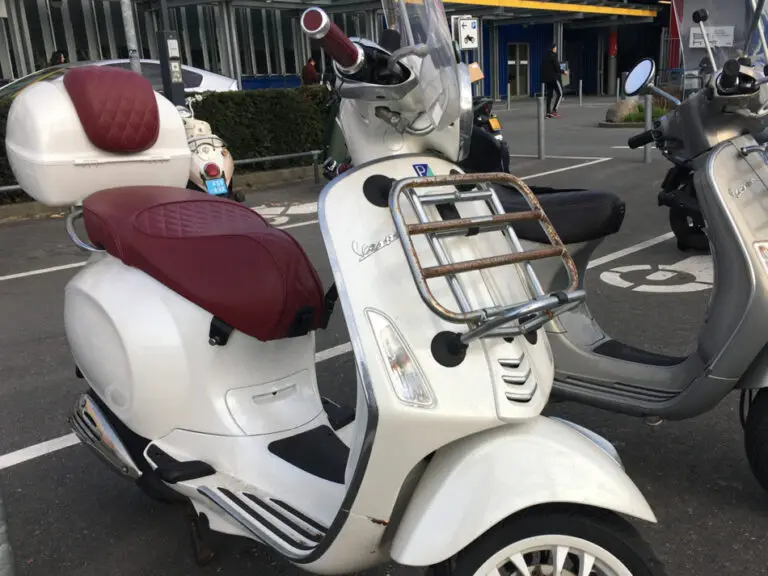The Checklist On Preparing Your Vespa For Long-Term Storage
When you think about long-term storage for your Vespa, perhaps for the winter or a long holiday then you might be surprised that parking it safely indoors isn’t the only thing you should do. At least we were pretty surprised. In the beginning, we had no idea that crucial parts of the engine and fuel lines can get damaged if the Vespa is standing still for a month or more.
We could imagine that moisture could lead to rust. However, we didn’t realize that the Vespa isn’t only prone to moisture and corrosion due to weather circumstances but also from the type of fuel and the quality of the oil used. The Vespa Electrica is of course an expectation in this case since they do not need fuel or motor oil.
Therefore there are some points that you should take into consideration when you will not be driving your Vespa longer than one month. Don’t worry, you won’t be the only one who doesn’t do all the steps that should be done to prepare your Vespa for storage. We haven’t always done everything on our checklist. Luckily the quality parts of a Vespa can handle a lot, especially if it isn’t standing outside.
Vespa owners who are able to drive occasionally during the winter months don’t really need to follow this checklist that we provide below. As long as you drive your Vespa once a week for 30 minutes or more, then your scooter will handle idling in the winter just fine. Just make sure the fluids get warm enough during the weekly ride so it can lubricate the engine and its parts sufficiently. Additionally, make sure the gas is refilled regularly to prevent it from getting ‘old’.
Those storing their Vespa for a longer period of time should check out the points we have listed below. The more boxes you can tick off, the more likely your Vespa will start running immediately after sitting in storage for many months.
Change the engine oil and filter before storing the Vespa
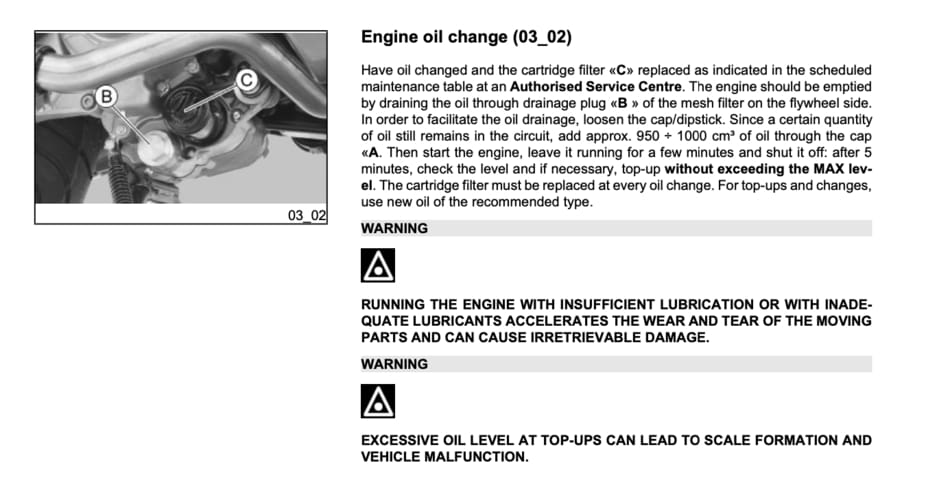
If you plan to store your Vespa for a month or longer then it is wise to change the engine oil and filter. Especially if you haven’t done it for a while or have reached 5000 to 6000 miles. Engine oil flows through the engine parts and fuel lines, lubricating them but also taking little unwanted particles back to the filter. Old oil can also corrode important parts of the engine when it sits for a long period of time.
Engine oil and a new oil filter for your Vespa can easily be ordered online.
In the service manual of your Vespa, you can read clearly how to change the oil and filter. Most 4-stroke Vespas are the same. The tools you will need are a torque wrench, a 24 mm bit, and a drain pan to catch the drained oil.
Before you get started, warm up the engine of your Vespa. Then let it cool off for 5 minutes. Be careful, all the engine and exhaust pipe components are still hot.
Use the 24 mm bit to open the drain plug located below your Vespa, behind the exhaust pipe. If the Vespa is parked on its center stand, then the stand will block access to the drain plug. Either use the side stand or fasten the front wheel on a table ramp. If you don’t have both you can also lean the Vespa against a wall.
Open the drain plug. Make sure the drain pan is located underneath. You will find a strainer within the drain. Pull it out so you can wipe it and clean it as well. Then return it back to its original position.
Next to the drain plug, you will find the filter. Its location makes it difficult to unscrew. Use an adjustable wrench. Be patient, take your time, and once it has loosened up a bit you can continue turning by hand. Catch the remaining oil as well.
Before inserting the new filter, wipe some oil around the circle of the ring to lubricate it. You can use your finger. This will prevent the filter to get stuck making it easier the remove it the next time you need to change it. Then place the new filter into the correct location. You can do this by hand. It shouldn’t be too tight or too loose. Just turn it hand tight, plus half a turn. Too tight can damage your casing, and too loose can cause a leak.
Once the filter is back in place, put the drain plug back too. Before doing so, lubricate it as well with clean oil so it will be easier to remove next time.
Remove the oil fill cap which is located just above your exhaust pipe. Then refill the Vespa by pouring new oil using a funnel. The amount of oil depends on the Vespa model. Check the manual for the exact amount.
After the new oil has been poured into the container, let the Vespa stand for a while. Then start the engine to see if the oil indicators are on and check for leakages.
Before storing your Vespa it is wise to let the oil pass through the engine and other moving parts. So go for a quick spin before parking it long-term. You can also remove the spark plug and spray some oil inside to coat the cylinder walls.
Prepare the fuel before storing the Vespa
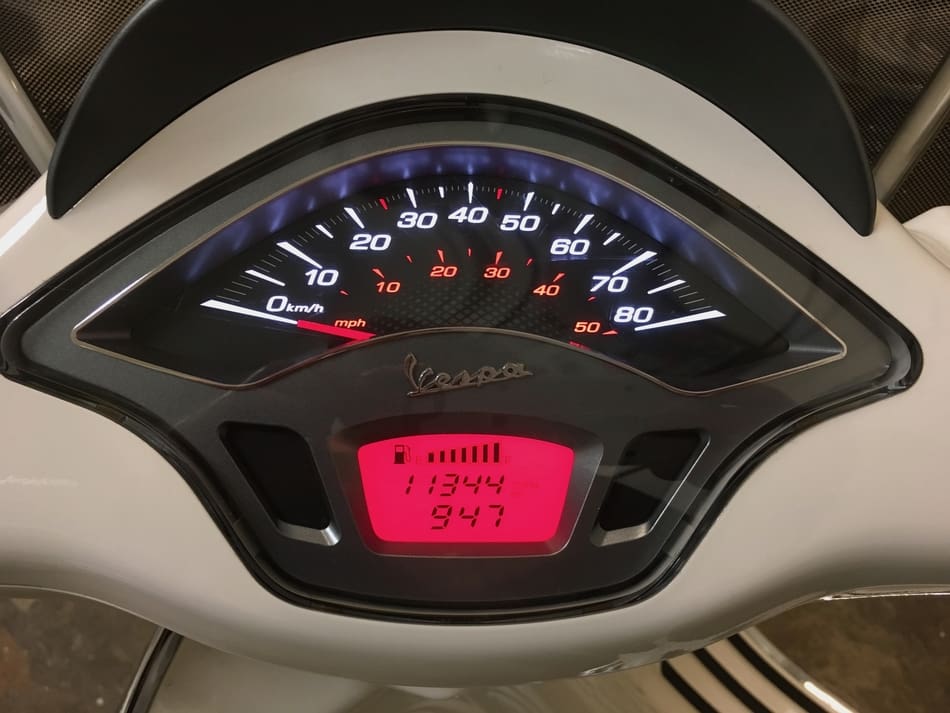
Planning to store your Vespa for more than 3 or more months? Then you have to deal with the fuel. Over time ethanol fuel will break down which will attract moisture. Moisture can create rust on the inside of the metal tank, crack the rubber fuel lines, internal rubber seals, and damage injectors.
There are two things you can do to avoid damage due to fuel:
- Remove the fuel entirely from the tank or
- Use fuel stabiliser
To remove the fuel from the tank you will need a plastic fuel hose and a jerry can. Open the fuel cap of your Vespa and stick one end into the fuel tank. Then suck some air through the other end of the hose with your mouth. Soon enough you will see some fuel flowing through the plastic hose.
Once you see fuel in the hose, block the end of the hose with your thumb. The fuel will stop flowing immediately and will rest within the hose. Then place that end into the jerry can and the fuel will flow straight into it. To ensure that the tank is entirely empty, run the Vespa for a while until the tank is fully drained and the engine dies.
If you are just planning to store your Vespa for up to 3 months then you can choose to leave it in the tank. It must be high-octane fuel, as this type of fuel starts corroding only after three months. Low-octane fuel can damage your tank if your Vespa isn’t used for a couple of weeks. So best to always use Premium gas. If possible try to use ethanol-free gas, so not E5 or E10. Ethanol fuel has alcohol which will dry out important engine components, especially those made of rubber.
You can also choose to keep the fuel in the tank and to use a fuel stabilizer. There are many types on the market as you can see here. Fuel stabilizers will prevent corrosion to the engines and fuel lines without the need of removing the fuel for long-term storage. You need to add a fuel stabilizer to a fully fueled Vespa. Then drive a bit so the stabilizer can mix properly with the fuel.
Clean your Vespa before storing it properly
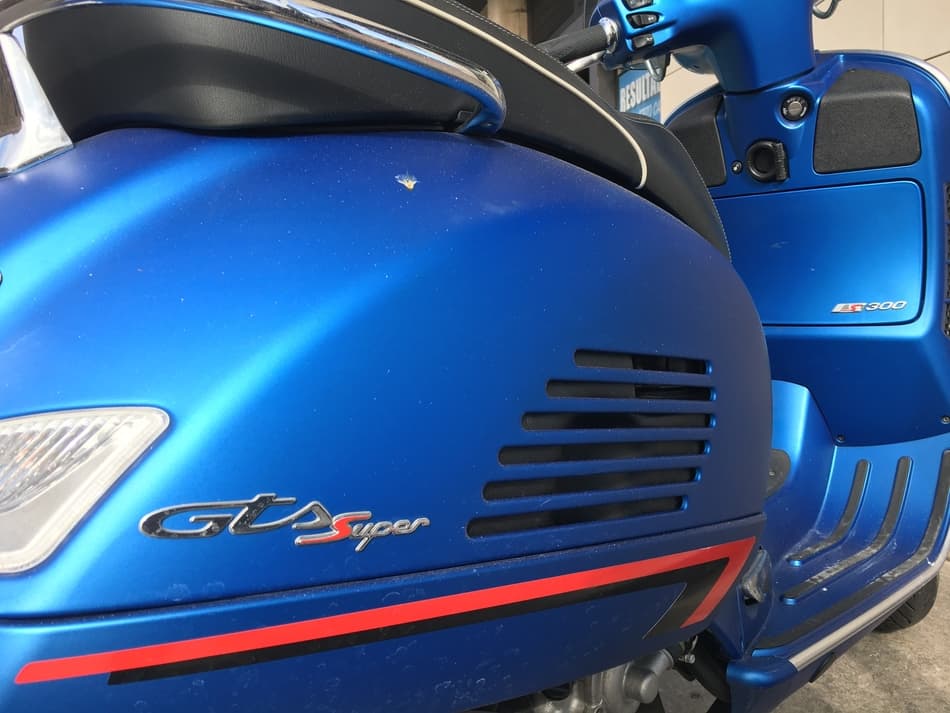
The Vespa frame is made out of metal. So unlike other scooters which are made of plastic, you should treat the Vespa frame like that of a car. It is important that your Vespa is cleaned properly first. Rinse it thoroughly and once dry make sure that sand and dust are removed entirely. Once this is done check for dents and/or damages to the paint. The exposed metal is subject to rust. Rust is something you really want to avoid.
If you don’t have the time or you just don’t want to have the dent and/or damages to the paint repaired then you might want to coat the area with some anti-corrosion spray. If you don’t have that within arms reach then some WD-40 will work too. Both options will keep the rust away.
Make sure your Vespa is dried entirely. Moist between the little cracks and corners of the bike can lead to corrosion once you place the cover over the Vespa.
Don’t forget to empty the Vespa storage compartments too. You don’t want to leave moist plastic bags or other items locked up for a couple of weeks. Mold and bad smell is the last thing you want to deal with once you take your Vespa out for a ride again.
An optional choice is to wax your Vespa to create a protective coating on the paint. This will protect the beautiful color of the Vespa from moisture and dirt. We always used turtle wax to make sure our Vespa’s looked top-notch. They have all types of waxes which you can find here.
Remove and store the Vespa battery properly
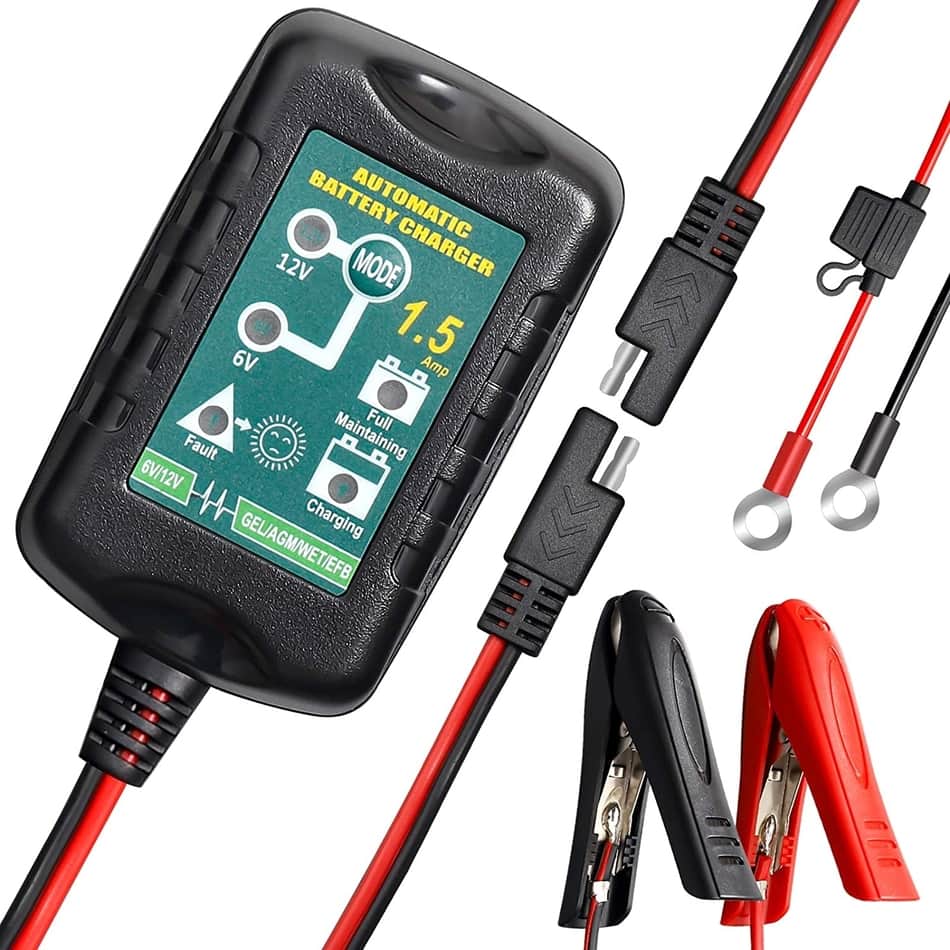
The battery of your Vespa will not be able to charge if you are not driving your scooter regularly. Over time the battery will slowly deplete. This is something you definitely want to avoid. A battery might not be extremely expensive. However, imagine hoping to go for a drive once spring sets in and your battery is dead.
The quality of your Vespa battery decreases pretty quickly, even if you haven’t driven for two weeks.
For long-period storage, it is best to remove the battery and keep it indoors, preferably inside your house. Batteries are pretty vulnerable, especially when it is extremely cold. It can freeze and break.
Depending on the model, the battery is located under the floorboard or under the seat. If you can’t find the battery have a look at the article we wrote on where you can find it.
Once you have removed the battery you need to connect it to a battery tender (also known as a trickle charger). This will prolong the battery life. You don’t have to go for an expensive battery tender, as long as it has an automatic shut-off feature. You don’t want to overcharge the battery.
Those owning a classic Vespa, don’t have to worry about the battery. 90% of classic Vespas do not have a battery. I guess the simplicity of these 2-stroke Vespa engines is one of the reasons why classic Vespas always seem to be able to drive endlessly, even after standing still for such a long time.
The battery of the Vespa Electrica (the e-scooter) is located under the seat. It is a huge battery and hard not to miss. It is really important to read the manual on how to store the battery of this Vespa. Its lifespan can diminish quickly or damage the battery pack if done improperly. Unlike the batteries of a ‘regular’ Vespa, replacing the battery of the Vespa Electrica is very expensive.
It is recommended to connect the battery of the Electrica to a tender. If you will not be using the Vespa for more than 30 days, then you drain the battery pack to 60% and try to keep it to this level. Do not let it drop below 30%.
If you wish to buy a battery tender, then there is a lot to choose from here.
Lift the tires when storing the Vespa long term
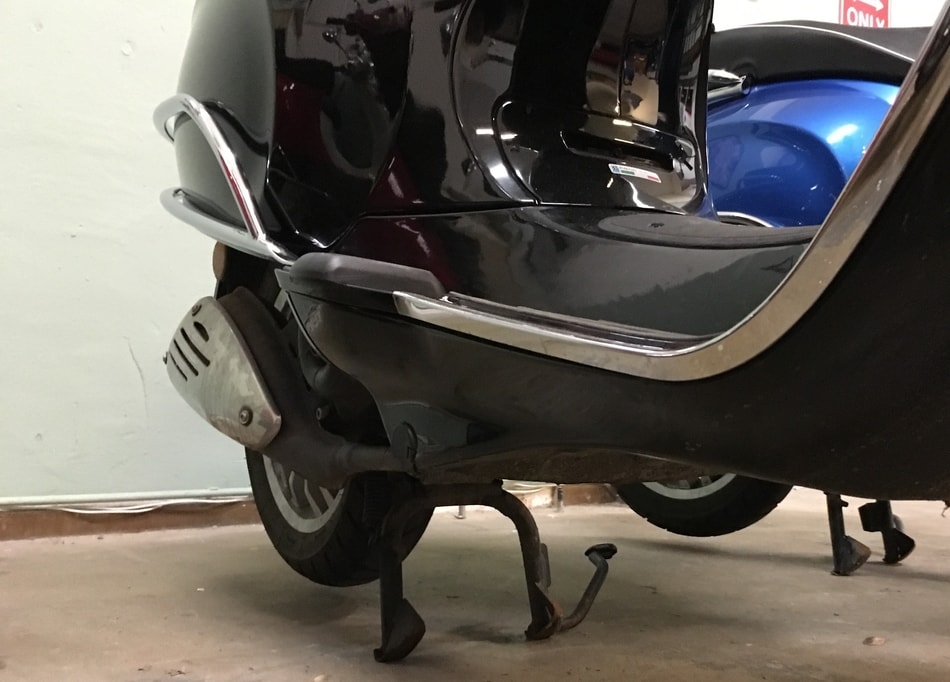
Your Vespa tires are something you should have a look at as well before storing the scooter. Over time tires will lose air. You might think that isn’t that big of a deal considering you won’t be driving for a while. But if the tire loses air the weight of the Vespa will be on the flat part of the tire. After a longer period of time, this will lead to flat spotting.
To prevent this try to put a bit more air than recommended in the tires. Then place it on the center stand. Also if possible, move the bike every now and then so the Vespa’s weight isn’t leaning on the same part of the tire the whole time.
Sometimes you will not have access to your Vespa for a long period. Then it might be wise to purchase paddock stands. This will lift both the rear and the front from the ground preventing uneven tire wear.
Store your Vespa under a good-quality cover
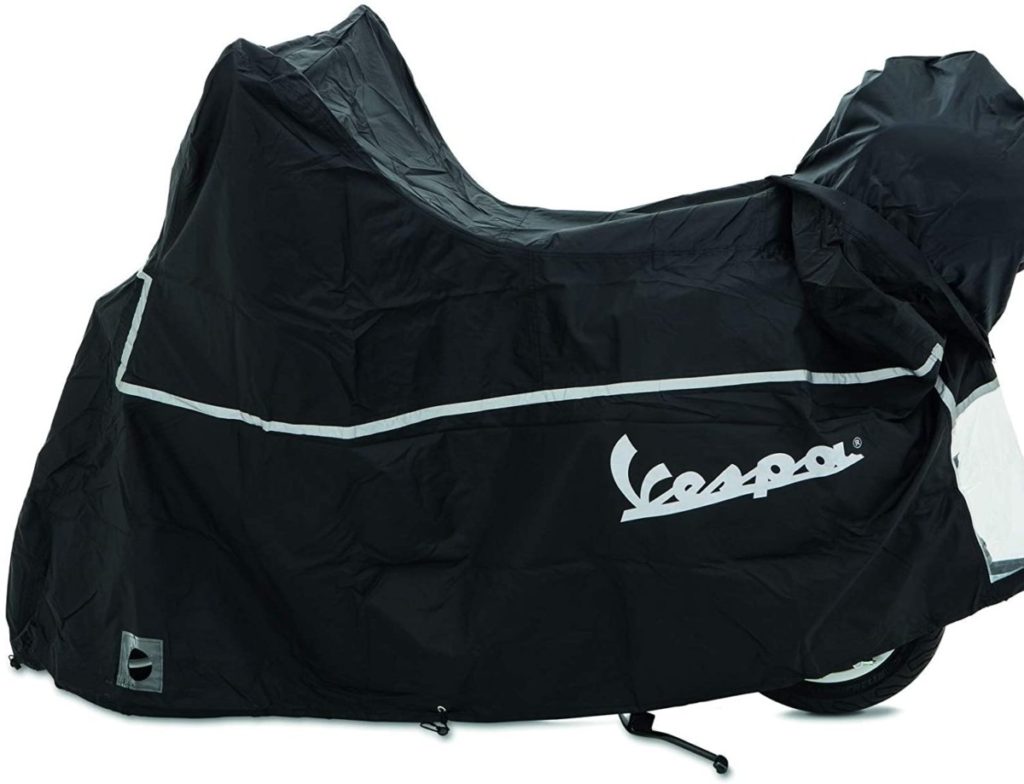
A cover is an ideal way to protect your Vespa from dust, moisture, and damage. When you look around you will find all kinds of covers ranging from USD25 to USD 150. To be on the safe side, you can buy a cover that is specifically made for a Vespa, but we noticed that other scooter covers work just as well.
But whatever you choose, never use a plastic tarp to cover your Vespa as this can damage the paint. A cover designed for scooters has an opening beneath to create some airflow so in case of moisture this can evaporate.
A basic cover might work well to protect your Vespa from dirt and paint. Especially if the Vespa is stored in warm and dry storage. However, a quality cover is worthwhile, especially those that are thick and have soft material on the inside. Over the years we have bought various types of covers. The one that worked best in all types of weather conditions was an Oxford motorcycle cover. Somehow when it comes to motorcycle covers there is more choice in good quality ones.
Before using a cover do make sure the Vespa is dried entirely and the engine is cooled off.
If you are not able to park your Vespa indoors, buy a good quality cover that you can attach to your scooter with a lock. Also, make sure to clear away snow from the cover every now and then. This is to maintain the quality of your cover.
Find an appropriate storage area for your Vespa
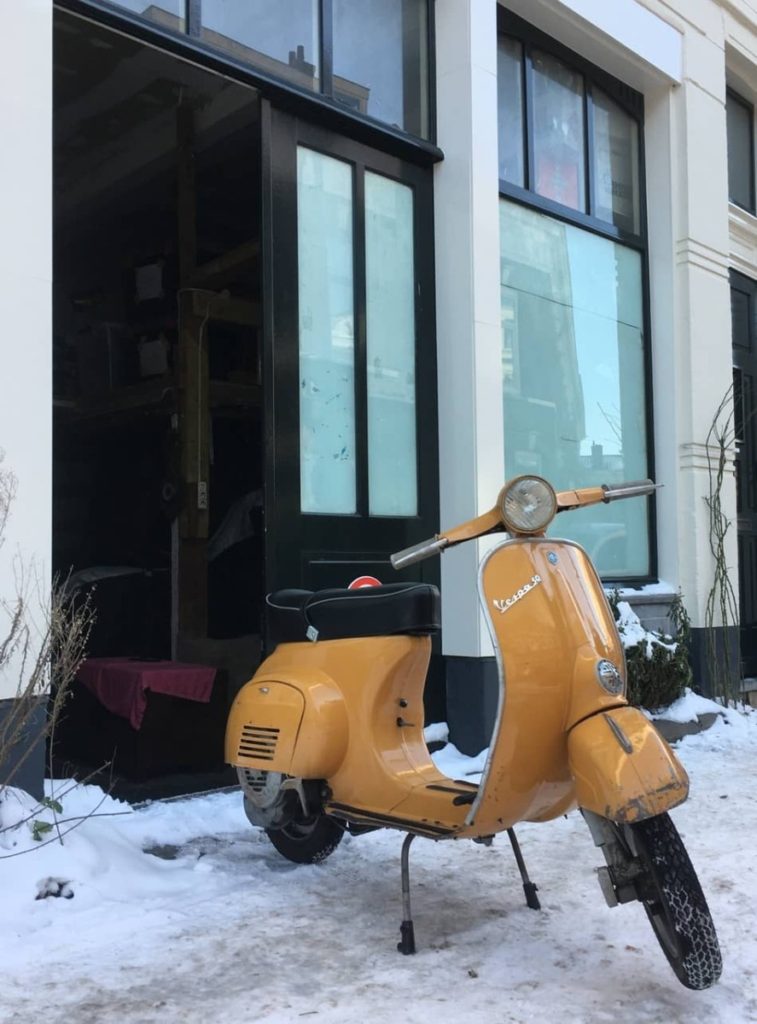
Once your Vespa is spotlessly clean, the fluids are replaced and the fuel has been dealt with, it is time to park in dry clean storage. Ideally, this is a climate-controlled space, but understandably such storage isn’t accessible for many Vespa owners.
During the winter our Vespas were all stored in our shop where there was no heater. Yet it was still an ideal place. So a shed or a garage is just as fine. For those who are not able to stow their Vespa indoors, then there are luckily some other storage options to choose from.
If you do have space near your house, such as a driveway or a little garden then you can opt to use a cover storage tent or a motorcycle canopy. Have a look here if this is something for you.
A cover storage tent/ motorcycle canopy is a pop-up tent in which your Vespa will fit properly sheltering it from rain, wind, sun, and snow. There are all kinds of designs. Some look like a little tent or shed, while others such as the HideyHood can be attached to a wall so you can cover the Vespa easily by closing the ‘hood’.
When we first just had one classic Vespa we stored it in one of the many storage boxes in town. For safety reasons, we had to remove the fuel entirely from the Vespa. Even if we just parked it for a couple of days. Perhaps this is an option for you too but first, check with the owners if they do not mind. Many do not want vehicles parked in an indoor storage box.
Use a proper lock once your Vespa is stored
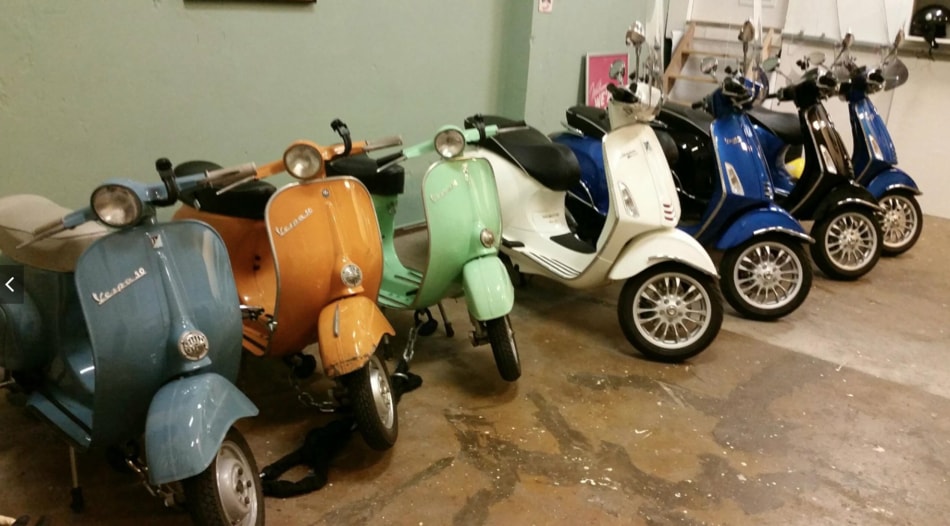
When you leave your Vespa behind you should always lock it properly. This is also the case when you have secure storage such as a shed or a garage. It might sound silly, but you will be surprised how many Vespas are stolen while parked behind closed doors.
Locking the Vespa to a ground or wall anchor is even better. Whether it is indoors or outdoors. Then you can rest assured that your Vespa can not be carried away. There are all kinds of models when it comes to these types of anchors as you can see here.
When we had more than one Vespa, we would attach them together with a long chain lock. This will make it difficult for thieves as well to carry your Vespa away.
Starting your Vespa after stowing it for a long period of time
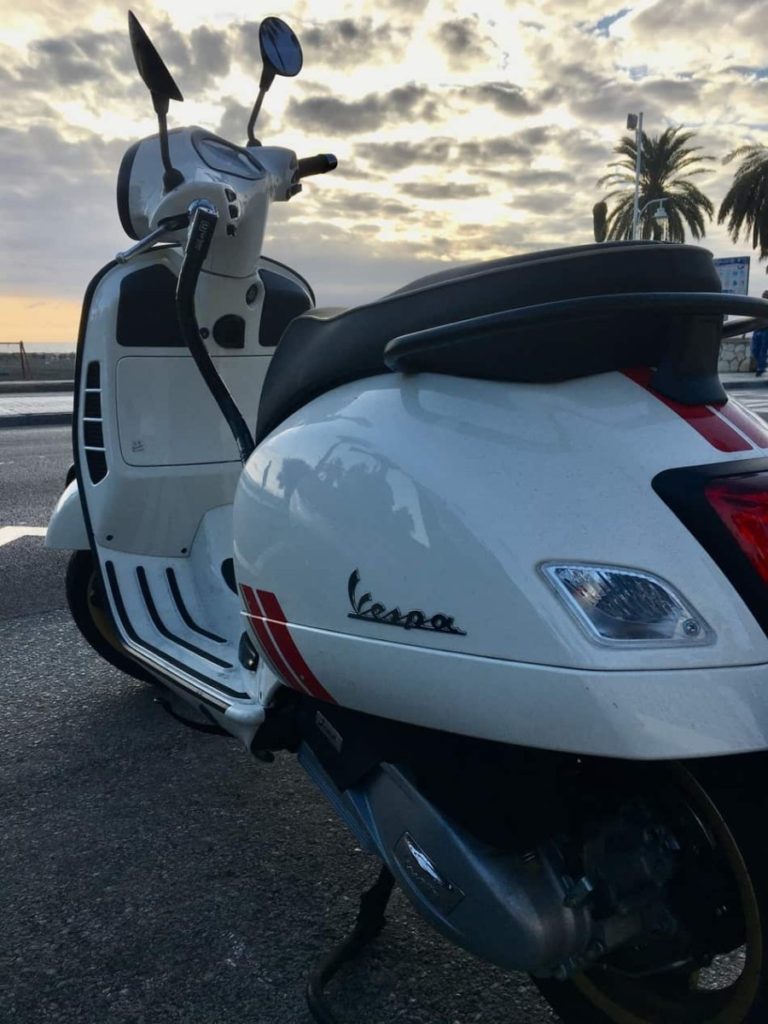
If your Vespa has been standing still for a long period of time and you have conducted the checklist as mentioned above, then you will have it up and running soon enough.
First of all, make sure that the battery is fully charged. Then take out the luggage compartment and visually check the fuel lines, connectors, and other rubber parts. Make sure there are no signs of corrosion, dust, or moisture.
Once all is well, check the tire pressure. Double-check the exhaust pipe. Little critters tend to build their nest there during the winter months.
The last step is to check the spark plug. There is a chance that your sparkplug is dry. If so, spray some oil on the spark park connector so it can lubricate essential engine parts when starting the engine.
To be on the safe side check the oil level as well. Place it on the center stand. Unscrew the dipstick on the left side of the engine, pull it out, and wipe it off with a cloth. Insert the dipstick fully back and pull it out again to check the mark on the dipstick. The oil level needs to be towards the max.
Start the engine after checking the oil levels and pull the gas throttle a couple of times. By doing so, the oil will flow through the engine. The engine needs to be warmer for the oil to fully run through the Vespa, so make sure you take your Vespa out for a long drive. Only then will the oil heat up so it will easily flow through all cylinders, the piston, and rings properly.

